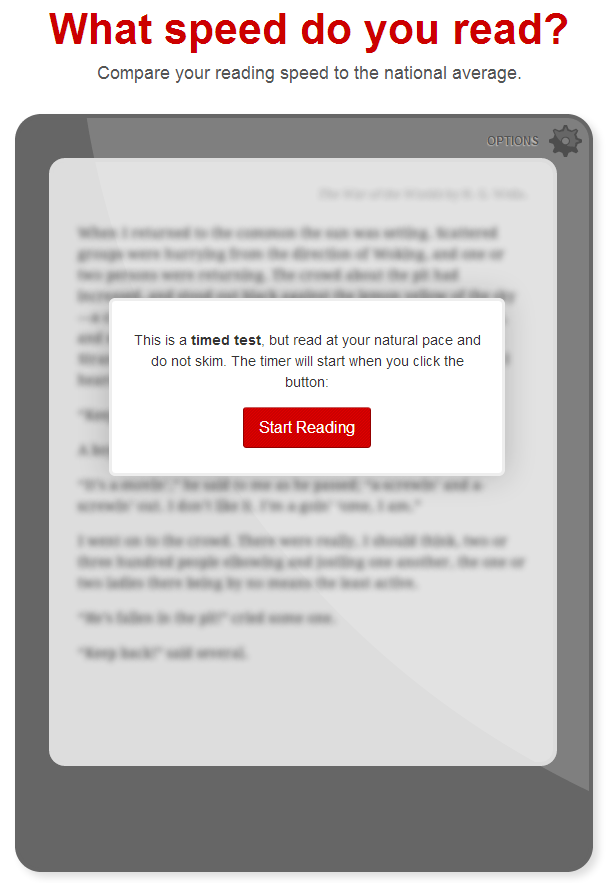I’ve said it before, but the speed at which you read is often less important than the quality of what you read, the depth of your reading, and the challenge of what you read; but reading faster tends to help you to read more, which can help with those other things since the more you read, the better you tend to get at the art of reading well.
However, who among us book-lovers, librarians, and other sundry citizens of biblioville wouldn’t like a little glance into the speed of our reading? There are a number of ways to test such results, but Staples has made a quick little reading-speed test that won’t take up much of your time:
That was easy! [sorry, I’m so sorry….]
Of interest to those who don’t even take the test might be the following statistics from Free-Speed-Reading.com’s What Is the Average Reading Speed of Americans?, which includes this outcome (the number is words-per-minute):
- 3rd Grade students – 150
- 4th Grade Students – 170
- 8th Grade Students – 250
- 11th Grade Students – 350
- Average Adults – 300
- Low Scoring College Students – 340
- Average College Students – 450
- High Scoring College Students – 800
- Mid Level Executives – 340
- High Level Executives – 575
- College Professors – 680
- High School Dropouts – 240
Don’t take the results too personally. As I said, reading fast is less important than reading well. And the best way to read well is to read more. The speed of your reading will increase naturally, as well.
Happy reading, Readers.

